Optimal Sprinting Performance: A Foot Fetish
Jason Cholewa – Follow me on twitter
Powerful Feet for Powerful Athletes
What is the missing link in training for athletic performance? If you are in my KHP350 Strength and Conditioning class you no doubt have heard me discuss ad nauseum the importance of glutei training for strength and power during running and jumping. But what if your athlete’s have highly functioning glutei and great strength, power, and mechanics, what else can be done? The answer is so simple, it might surprise you: train the toes!
How Important is the Large Toe?
Interestingly, Lee and Piazza (2009) reported that elite sprinters had longer toes than non-sprinters. The researchers demonstrated that longer toes permitted a greater maximal forward driving force at toe push-off during sprinting. It’s quite evident that the metatarsal phalangeal joint (MPJ) is the final link between powerful hip, knee, and ankle extensors force generation and the ground. Additionally, the MPJ displays the greatest range of motion in the sagittal plane of any foot joints. Anatomically, the long head of the toe flexor muscle group comprises 10% of lower leg musculature (Wickiewicz et al., 1983). The short head of the toe flexor muscle group comprises 80% of foot musculature (Kura et al., 1997).
Big toe flexor muscles
Observe the image below, the force generated during the triple extension in sprinting is transferred through the MPJ into the ground. The degree of MPJ hyperextension (the loss of foot rigidity) represents inefficiency in ability of the athlete to apply maximal force into the ground. I liken this effect to being asked to hop on repetitively and quickly on the balls of your feet. In the optimal case your ankle remains fairly rigid and you sprint back up with each landing. In the case of inefficiency, each time you land your ankle flexes significantly (i.e.: is unable to maintain stiffness) and your heel taps the ground.
The greater the degree of big toe dorsiflexion (hyper-extension) the larger to loss of forces transmitted into the track.
Another reason training the large toe flexors are important may be injury prevention. Ray Lewis, one of the toughest Line Backers to play in the NFL, missed several weeks due to a sprain at the MPJ (turf toe). Turf toe can occur when the ability to resist MPH hyper-extension (toe flexor strength) is inadequate, especially during high velocity situations, such as sports (image below).
How Adaptable are the Big Toe Flexors?
Goldmann et al. (2012) trained 15 recreational athletes for seven weeks. The training program involved subjects performing 4 sets of 5 isometric repetitions (3 s contraction, 3 s relaxation) with 90% of maximal voluntary contractile force 4 times per week. Subjects continued their daily activities, but were restricted from starting a new exercise program. A control group of 12 equally matched subjects continued their daily activities with no additional toe training.
Seven weeks of isometrical toe training improved MPJ flexion force production by 60-70%. Ankle plantar force also increased with toe training. Collectively, one might expect to see an increase in ankle or MPJ power during walking, jogging, or vertical jumping; however, there were no differences between groups, possibly due to the lower external MPJ hyper-extension forces exerted during these movements.
In contrast, the horizontal jump generates three times the maximal external MPJ hyper-extension forces compared to jogging or jumping vertically (see image below). This occurs because the athlete must move the center of mass past the toes as takeoff occurs, compared to the vertical jump where the center of mass stays slightly behind the toes. Ironically, the movement in the horizontal jump is very similar to that during maximal velocity sprinting. In simple terms, more force is lost as the toe bends during horizontal jumping (and likely sprinting) compared to jogging or vertical jumping.
Compare the difference in the relationship between the placement of the center of gravity and the toes at take off during the horizontal and vertical jumps.
Goldmann et al. reported toe training significantly increased MPJ mechanical power during the horizontal jump. Theoretically, if big toe rigidity is increased during high external forces, then force transmission from the posterior kinetic chain into the ground will increase, and horizontal jump should improve. Indeed the horizontal jump did increase with toe training. The training group saw a 6 cm increase in horizontal jump, compared to only 1 cm in the control group.
Application
Goldmann et al. designed special dynamometers to determine MPJ maximal flexion and to train utilizing 90% maximal force. In strength and conditioning facilities whereby space and/or funds is at a premium, a quality platform or glute-ham-raise will likely produce a higher return on investment than a toe dynamometer. That said, there are two inexpensive, space-friendly, and convenient methods in which to train MPJ flexion.
The first application is with the use of resistance bands (image below). The toe flexors operate during the horizontal jump or sprinting to hold the foot in a rigid lever. When toe hyper-extension occurs this lever bends, and forces are lost. In keeping with this theme, training toe flexion utilizing an isometric or even eccentric manner will likely produce the largest results. According to the results reported by Goldmann et al., 4 to 5 sets of 5-8 reps per foot 3 to 4 times per week will produce results within two weeks and you should continue to see improvements so long as the toe flexors are overloaded progressively. What’s more, your athletes can train in the evening while watching Monday Night Football or Duck Dynasty.
Band resisted MPJ flexion exercises. Notice the phalangeal joints do not flex (i.e.: my big toe is always extended).
Athletes may also be able to increase MPJ flexion force by simply increased daily foot structure loading. Bruggermann et al. (2005) reported a 20% increase in toe flexor strength and a 4-5% increase in toe flexor CSA following 5 months of switching from conventional sneakers to ones with a highly flexible sole (i.e.: Vibram Five Fingers, New Balance Minimus, etc.). Simply put, spending more time barefoot and training in minimalist sneakers should increase foot lever rigidity during sprinting and horizontal jumping.
It’s likely that a combination of band resisted toe flexion work and training in minimalist footwear will have the greatest impact on MPJ flexion force. If MPJ flexion strength is increased, this should translate into a more rigid foot lever (i.e.: less force loss during toe off movements). Thus, tasks where the center of gravity moves anterior to the large toe and large forces need to be transmitted into the ground (such as sprinting and broad jumping) will reap the largest benefit from big toe training. So, the missing link between good performance and explosive performance may just be a bum toe.
References:
Bruggermann et al. (2005). Effect of increased mechanical stimuli on foot muscle functional capacity. International Society of Biomechanics, XXth Congress, Cleveland, OH.
Goldmann et al. (2012). The potential of toe flexor muscles to enhance performance. Journal of Sports Sciences, (Epub), 1-10.
Lee & Piazza. (2009). Built for speed: musculoskeletal structure and sprinting ability. The Journal of Experimental Biology, 212, 3700-3707.
Kura et al. (1997).Quantitative analysis of the intrinsic muscles of the foot. Anatomical Record, 249, 143-151.
Wickiewicz et al. (1983). Muscle architecture of the human lower limb. Clinical Orthopaedics and Related Research, 179, 275-283.
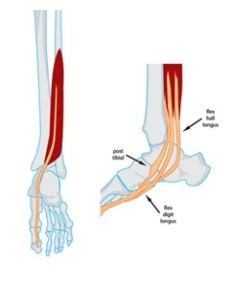
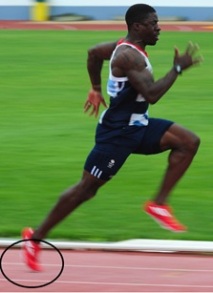
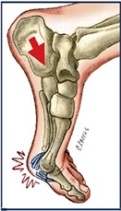
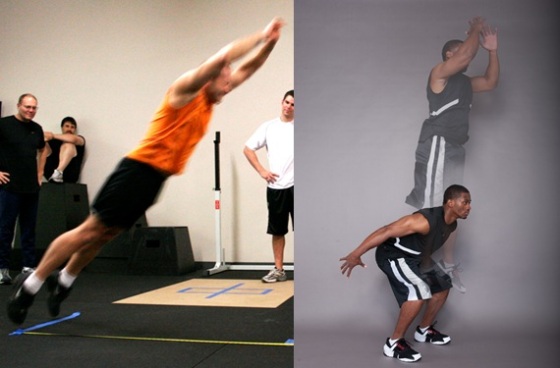
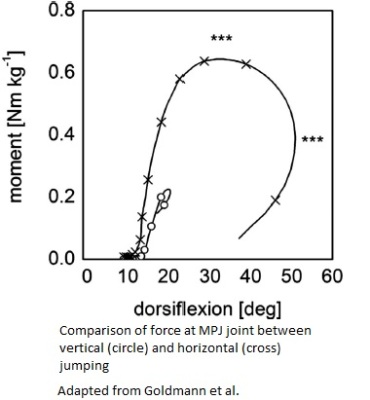
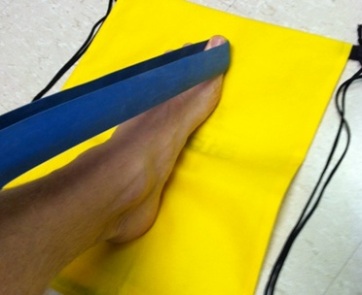
Thank You! I have been SEARCHING the net for an article that says everything you wrote. I have beeen doing research to write a blog post on the power of the big toe.
I have been practicing Brazilian Jiu Jitsu (BJJ) for almost 8 years and currently hold the rank of brown belt; and I have been training in Eskrima for 1 year. I practiced classical ballet for 10 years as a child. Also, I am police officer and am training for swat tryouts next year.
A few years ago, I was working a BJJ position called “side control,” in which one lays perpendicular across the top of your opponent, who is on their back. I am usually smaller than most of my classmates, so as I worked on this position, I was constantly being (very easily) tossed aside.
During one class, my instructor told me to begin the power of laying over my opponent in the end of my big toe. And…all of a sudden, well, not that suddenly, but over the next couple of months I created what has now become my strongest position, because I am able to hold down the burliest of guys utilizing what I recently discovered is Ground Reaction Force.
I read an article in Vanity Fair magazine about a female jockey (I regret I cannot remember her name) and she cited the big toe as her main power source to guide the horse, with the reins being a “suggestion.”
In training for swat tryouts, i have been working like a madwoman on my sprint technique for the required 440m run. I have learned how to run on my toes, AND how to use my big toe as a guide and jump off point for my next step.
I started to think, what the heck is with the big toe? I decided this subject would be worthy of a blog post. Your article is one of the very few I have found, and I think the ONLY one that describes in layman’s terms the mechanics behind the power of the big toe.
Dagney Taggert
Thanks Dagney, I’m glad you found it helpful. Feel free to contact me if you need any other info, etc. My expertise is in resistance training, and one of my colleauges specializes in tactical strength and conditioning.
I noticed on your blog you worked with a track athlete named Karolyn, that wouldn’t happen to be Karolyn Trainer (sp?) would it?
Jason
Hello, Thank you for the response. I work with Karoline Koehler. She went to San Diego State and competed for them on the collegiate level. She competes internationally for Germany.
Dagney
Hi Jason
What role do you think the concentric contraction of the toe flexors plays in sprinting . I have a particular interest in this group of muscles .
Regards
Blue
Preliminary evidence would suggest that improving toe flexor strength improves sprinting and horizontal jump capabilities. I am not sure what role exactly the concentric strength of the toe flexors play, as it doesn’t seem like the absorb and ‘give back’ force like the plantar flexor tendon does. Rather it seems its their ability to minimize the eccentric movement at toe off, and thereby minimize force lost as the joint dorsi flexes thus transmitting more force into the ground.
Hi Jason
In terms of general athletic activity are you aware of any studies which look at the role of the toe plantar flexors in deceleration of the centre of mass and in effecting directional change ?
Is it just me or would a study of the feet of a group of professional tennis players ,subject as their feet are to continuous on court acceleration,deceleration and directional change ,make a fascinating read .
Blue
Hi Blue,
I have not seen any; the research on toe strength and performance is still in its infancy. Much more seems to have been done re injury risk. With your idea, I am curious, what are the mechanics of the foot strike/plant when it comes to changing directions and stopping? Is it a heel strike or more of the mid-foot/toes?
Hi Jason
A super slow motion version of a professional tennis match shows a large variety of foot contacts and patterns of movement and I should imagine that the mechanics of changing directions and stopping/decelerating varies .
Going back to the subject of concentric contraction of the toe flexors I wonder if you are familiar with a paper entitled “The architecture and contaction time of the intrinsic foot muscles ” Tosovic et al ,University of Queensland ,2012 .
Based on the contraction time of the muscle the paper suggests a role for flexor digitorum brevis (FDB)which involves the muscle acting to develop rapid ground reaction forces .
It made me think .Might it be that one role of the FDB is to assist in the rapid movement of the foot and leg /lower leg relative to the centre of mass (COM) rather than move the COM itself ?. Think fast feet !
Regards
Blue
Blue, that would make sense, there’s a possibility also that FDB might send some afferent that play a role in balance and force development during change of direction too.
I am an Olympic Athlete Track & field athlete for Trinidad & Tobago/ Texas A&M University and I am looking for ways to increase my performance through strengthening various lagging parts of my body. So far I have targeted my glutes, ankles/calves, and hip flexors. I have found that these are my weakness. This toe study just takes it to another level. A very notable coach told me I should strengthen by body from bottom to top and my toe will be the first place I start. @ChasinDominance
Glad to be of help, don’t hesitate to ask for more. Good luck this season Wayne!
Hi Jason
On the subject of strengthening the toe flexor muscles of the foot and improved sprint performance I wonder if you have yet had time to read a very recently published paper which showed that strengthening the intrinsic toe flexors led,on average , to an improvement of 0.29 secs over a 50m sprint distance amonst a group of healthy male subjects .
The paper is – Takayuki Hashimoto ;Keishoku Sakuraba -Strength Training for the Intrinsic Muscles of the Foot ;Effects on Muscle Strength ,the Foot Arch and Dynamic Parameters Before and After Training ; J.Phys.Ther.Sci.26 373-376,2014
The online version of the paper does not contain a photograph of the equipment used to strengthen the toes but the method seems to have involved flexing the toes against a load provided by scales whilst the ankle was kept in a plantarflexed position to reduce the imput of the extrinsic toe flexors .
I would be interested in your thoughts
Regards
Blue
Hi Blue,
I have not seen that paper, although I remember reading a paper a while back that looked at the relationship between toe length, foot architecture, and sprinting performance. I remember seeing that longer toes and certain characteristics of foot architecture were related to faster times. This is an interesting topic, and one that I will likely revisit down the road. Do you have the full text you could email me?
Thanks!
Hi Jason ,
The paper is open access and a link can be found on pubmed by entering “Iintrinsic foot muscles Hashimto ” into the search box . This will also bring up a paper published on the same day by the same authors which uses needle electromyography to evaluate the merits of exercising the toes with the foot in a plantarflexed position .
Regards
Blue
Hi Jason
I recently came across a paper from 2001(1) on the transverse mechanichal properties of skeletal muscle and I think that you might very well be right about training the toe flexors to help prevent injuy .
My understanding is now that when passive muscle is subjected to transverse compression its behaviour can be predicted using an incompressible viscoelastic model (Ogden) . In addition passive skeletal muscle displays changes in stiffness to changes in rate of load application . Might the intrinsic muscles of the foot act to transmit load from the tarsal/metatarsal arch to the plantar fascia in the midfoot region and thus help to support the bony arch of the foot and help to avoid harmfull shearing and displacement forces between the articulating bones of foot ?
Also ,in early stance as weight is transferred onto the foot causing a lowering and lenghtening of the tarsal/metatarsal arch and a tensioning of the plantar fascia, might compressive forces act through the passive muscle located between the bony arch and the plantar fascia to effect emptying of the plantar venous plexus ?
Could changes in the composition of the plantar intrinsics predispose towards injury ?
Kind regards
Blue
(1) Bosboom EM et al ; Passive transverse mechanical properties of skeletal muscle under in vivo compression ; J Biomech 2001 Oct 34(10)
Blue, I think you are on to something. I’ve also seen research and some proposed training mechanisms that focus on drawing metatarsal-phalangeal joint back to train some of the intrinsic foot muscles that would play a role in bearing that load. It was called the short foot exercise:
Running Barefoot or in Minimalist Shoes: Evidence or Conjecture?
Rothschild, Carey
Strength & Conditioning Journal. 34(2):8-17, April 2012.
PREPARATORY EXERCISE PROGRAM FOR THE INDIVIDUAL TRANSITIONING TO THE BAREFOOT STYLE OF RUNNING. 17. Jenkins DW, Cauthon DJ. Barefoot running claims and controversies: A review of the literature.
I can email you the full text if you want.
Jason
Hi Jason
Thanks for getting back to me and its good to hear that you think my ideas might have some validity. With regard to the barefoot vs shod running debate I’m afraid I know little about the subject and have more of an interest in agility orientated sports such as tennis and also in the heavy throws .
You mentioned the short foot exercise and it certainly seems to be attracting considerable interest at the moment with new papers being published on a fairly regular basis .
As you have said previously there is still a lot to learn about the human foot !
Kind regards
blue
Hi Jason
With regard to my ideas about the possible role that the intrinsic muscles of the foot might play in transmitting forces between the tarsal/metatarsal arch and the planter fascia and to the short foot exercise that you mentioned I had a look for some evidence that this exercise can not only increase the strength of the foot muscles but also that it can increase muscle cross sectional area . I did find one paper (1) that shows that in subjects with pes planus (flat feet ) the short foot exercise can be used in conjunction with foot orthoses to increase the cross sectional area of the abductor hallucis muscle . The abductor hallucis is thought to play an import role in the support of the medial longitudinal arch and I wonder if it may act not only by applying force through its point of insertion but also by acting in concert with the tarsal/metatarsal arch and the plantar fascia to maintain or change tension in the fascia itself.
Kind regards
Gerry (blue)
Gerrard Farrell
Glasgow
Ref (1) Jung Dy ,Koh EK ,Kwon OY Effect of foot orthoses and short-foot exercise on the cross sectional area of the abductor hallucis muscle in subjects with pes planus ;a randomized controlled trial J Back Musculoskeletal Rehabil 2011
Nice find. Good news for a flat footed fellow such as myself!